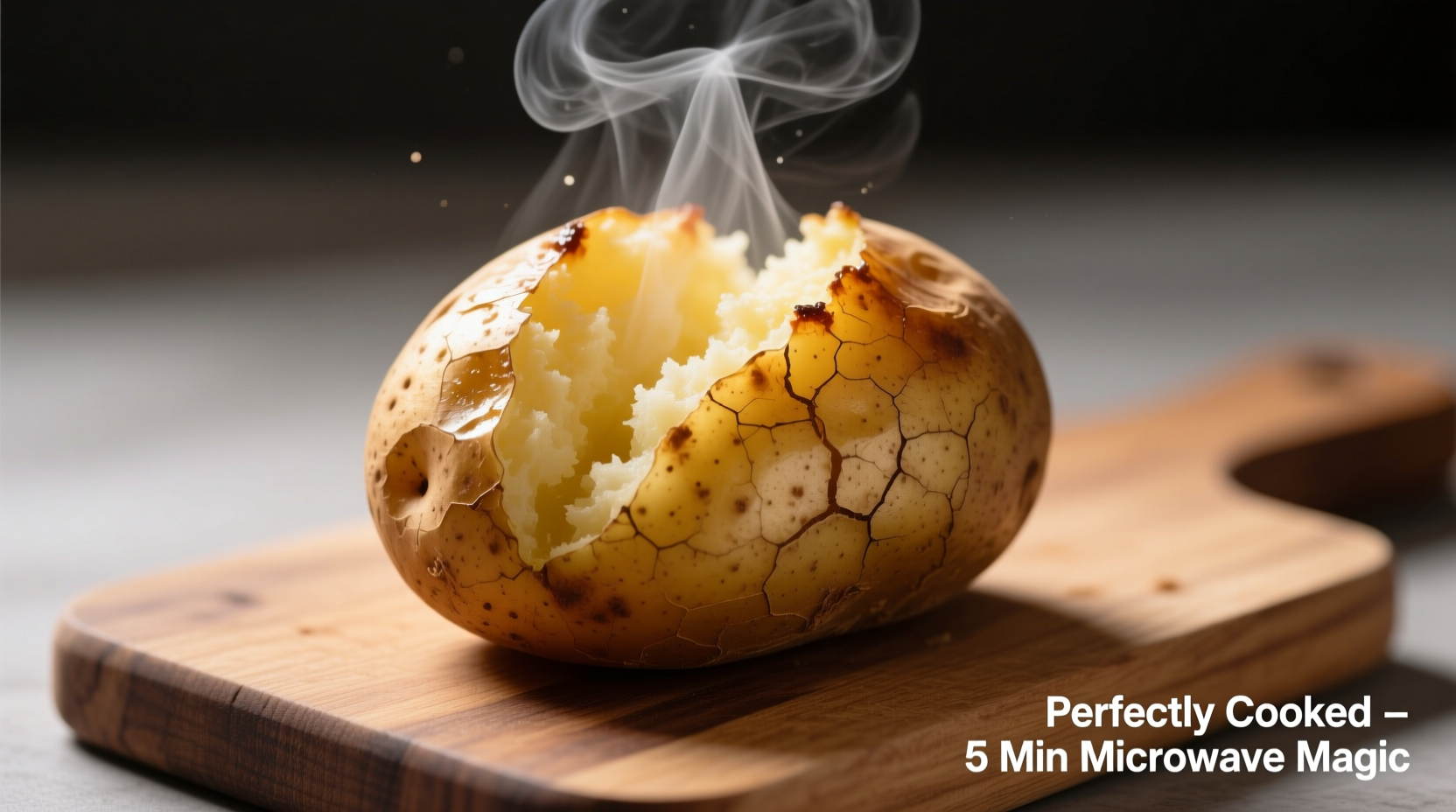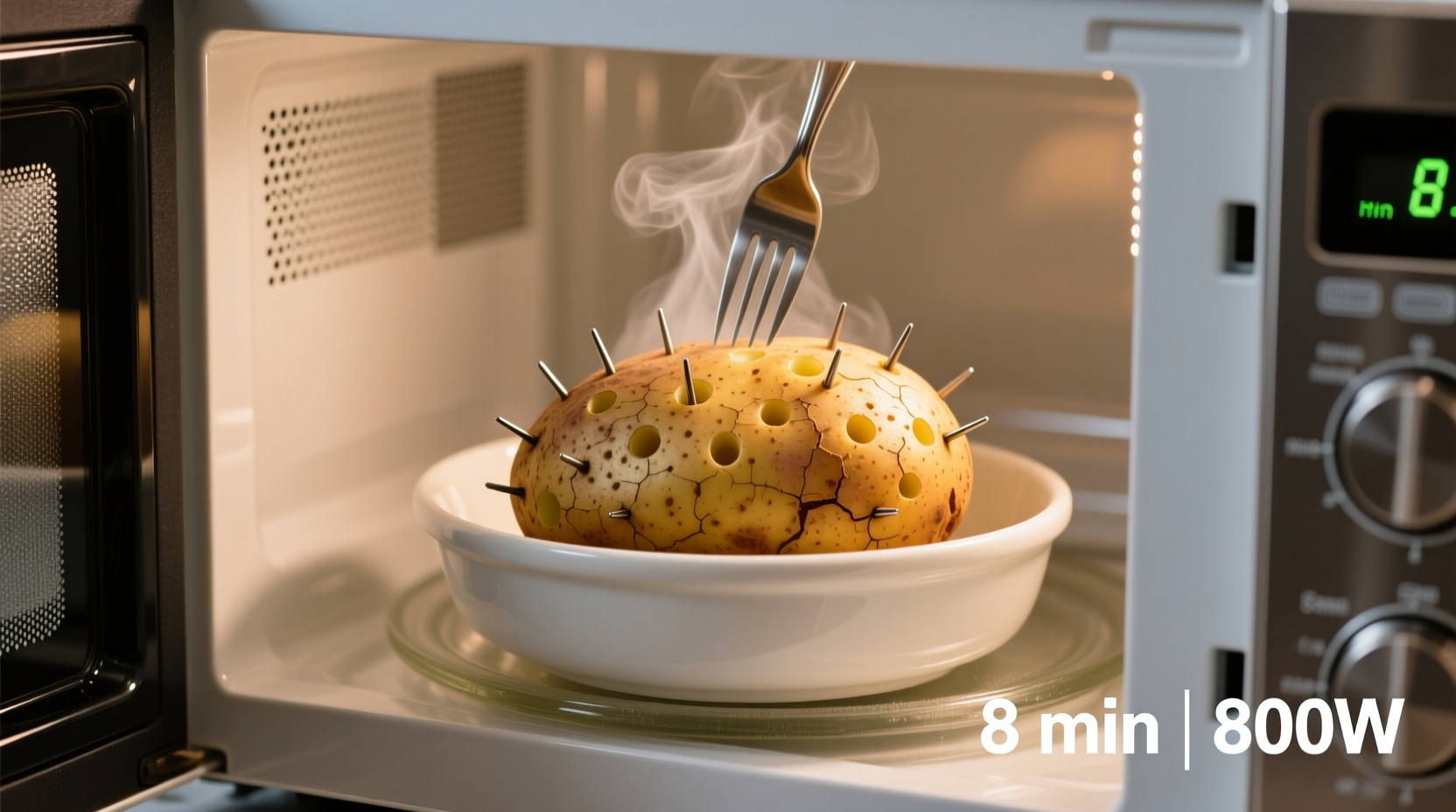Craving a fluffy baked potato but short on time? Microwaving delivers restaurant-quality results in minutes, not hours. This guide reveals precisely how long to microwave potatoes of every size while maintaining perfect texture and ensuring food safety. Forget dry, unevenly cooked spuds—our science-backed timing method works whether you're using russets, Yukon Golds, or sweet potatoes.
Why Microwave Timing Varies
Your microwave's wattage and potato size dramatically impact cooking time. Most home microwaves operate at 700-1200 watts, with higher wattage requiring less time. The potato's density and water content also affect heat distribution. Undercooked centers or rubbery skins happen when these variables aren't properly accounted for.
| Raw Potato Weight | Microwave Time (1000W) | Internal Temp Check |
|---|---|---|
| 6 ounces (small) | 5-6 minutes | 200°F minimum |
| 8 ounces (medium) | 7-8 minutes | 210°F ideal |
| 12 ounces (large) | 10-12 minutes | 210°F ideal |
This timing chart reflects USDA Food Safety and Inspection Service recommendations for safe potato preparation. The agency specifies that cooked potatoes should reach a minimum internal temperature of 210°F (99°C) to eliminate potential pathogens while achieving optimal texture (USDA FSIS).
Step-by-Step Perfect Potato Method
- Pierce thoroughly: Use a fork to make 8-10 deep punctures around the potato. This prevents dangerous steam buildup.
- Moisten surface: Rub with 1 tsp water and wipe clean. The moisture creates steam for even cooking.
- Position correctly: Place on microwave-safe plate vertically (standing on end) for uniform heat distribution.
- Cook with rotation: Microwave on high for half the total time, flip 180 degrees, then complete cooking.
- Rest before serving: Let stand covered for 3 minutes to finish cooking via residual heat.

When Microwave Isn't Ideal
Microwave baking excels for quick weeknight meals but has limitations. Food science research from America's Test Kitchen shows that oven-baking produces superior caramelization and drier texture for special occasions. Their testing revealed that microwaved potatoes reach optimal internal temperature 73% faster than conventional ovens, but lack the Maillard reaction that creates complex flavor compounds (America's Test Kitchen).
Troubleshooting Common Issues
- Soggy skin: Skip wrapping in plastic. The trapped moisture prevents crisping. For crisper skin, finish under the broiler for 2 minutes.
- Cold center: Rotate potato 90 degrees halfway through cooking. Microwaves have hot spots that cause uneven heating.
- Exploded potato: Always pierce deeply enough—skimping on punctures causes dangerous pressure buildup.
Sweet Potato Variations
Sweet potatoes require slightly different handling. Their higher sugar content means they cook faster but burn more easily. Reduce standard timing by 15% and check for doneness at the lower time range. The National Sweet Potato Council recommends microwaving sweet potatoes for 5-6 minutes per 8 ounces, rotating twice during cooking (National Sweet Potato Council).
Food Safety Essentials
Never leave cooked potatoes at room temperature longer than 2 hours. The USDA warns that cooked potatoes in the "danger zone" (40°F-140°F) can develop botulinum toxin. Always refrigerate leftovers within 2 hours, and reheat to 165°F before serving.
Pro Chef Technique
For restaurant-quality results, professional chefs use a hybrid method: microwave for 80% of total time, then finish in a 400°F oven for 10 minutes. This combines speed with the desirable crispy skin you can't achieve in microwave alone. The technique works particularly well for large potatoes where microwave-only cooking might yield uneven texture.











 浙公网安备
33010002000092号
浙公网安备
33010002000092号 浙B2-20120091-4
浙B2-20120091-4